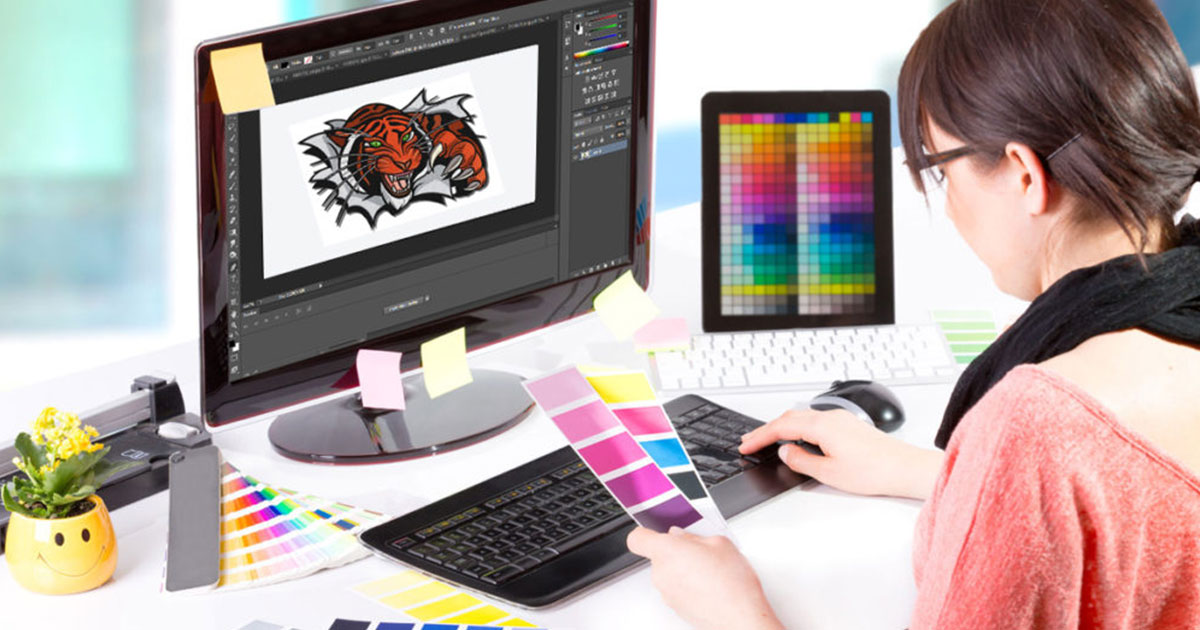Comprehensive Digitizing for Embroidery: From Style to Sew
Comprehensive Digitizing for Embroidery: From Style to Sew
Blog Article
Understanding the Needlework Digitizing Process: Your Ultimate Overview
Needlework digitizing is a careful craft that requires precision and know-how to equate intricate styles into digital layouts for machine needlework. As artisans start this journey to grasp the embroidery digitizing procedure, a thorough understanding of the essentials establishes the foundation for excellence. Nevertheless, beyond the simple understanding lies a realm of advanced software, specialized tools, and nuanced techniques waiting to be checked out. By delving into the nuances of digitizing, one can unlock a world of innovative possibilities and raise their needlework jobs to new elevations.

Recognizing Needlework Digitizing Fundamentals
Needlework digitizing essentials develop the structure whereupon complex layouts are converted right into machine-readable styles for exact sewing. This preliminary action in the embroidery digitizing process is important for making certain that the final embroidered product is a faithful representation of the initial layout. Recognizing needlework digitizing fundamentals includes understanding crucial ideas such as stitch types, stitch instructions, thickness, underlay, and pull payment.
Stitch kinds play a crucial function in identifying the visual and textural outcome of the stitched style. By choosing the appropriate stitch kind, whether it be satin, fill, or running stitch, digitizers can attain the preferred effect and boost the general quality of the needlework. In addition, stitch instructions affects the flow and measurement of the layout, while density determines the spacing and insurance coverage of the stitches.
Moreover, rug sewing supplies stability to the layout by protecting the textile and stopping distortion during the needlework process. Draw payment is another crucial factor to consider to counteract the all-natural tendency of material to contract when sewn. Mastering these needlework digitizing basics is essential for creating professional-quality stitched items.
Selecting the Right Digitizing Software Program
Selecting the ideal digitizing software application is a critical choice that dramatically impacts the performance and top quality of the embroidery digitizing process. Digitizing for Embroidery. When picking the right digitizing software application, it is important to think about elements such as the complexity of layouts you intend to produce, the user-friendliness of the software application, the level of customer support used, and the compatibility with your needlework maker
There are various digitizing software application choices readily available in the market, ranging from standard programs for novices to sophisticated software application for specialist digitizers. Some prominent selections consist of Wilcom EmbroideryStudio, Hatch Needlework Software Application, and PulseID. These software supply a vast array of tools and attributes to aid you develop detailed styles effortlessly.
Prior to making a choice, it is suggested to discover the various software options via free tests or demonstrations to determine which one best matches your demands. In addition, reading testimonials and looking for referrals from skilled digitizers can offer valuable insights into the strengths and weak points of each software program plan (Digitizing for Embroidery). By carefully evaluating your demands and comparing the features of different digitizing software application, you can make an informed selection that boosts your embroidery digitizing operations
Digitizing Devices and Methods

Optimizing Style Setup for Embroidery
Mastering the details of design setups is essential in accomplishing ideal results in the needlework digitizing procedure, building upon the structure laid additional info by recognizing digitizing devices and strategies. When enhancing style settings for needlework, it is crucial to take into consideration factors such as stitch type, density, rug, draw compensation, and registration. Registration settings line up various components of the layout accurately, preserving total layout honesty.

Troubleshooting Common Digitizing Issues
When running into typical digitizing concerns throughout the needlework process, it is vital to recognize the origin and execute efficient services without delay. One typical trouble is stitch thickness issues, where stitches may be too thick, causing the textile to tighten, or also sparse, leading to voids in the layout. Readjusting the stitch thickness settings in the digitizing software can help settle this issue.
An additional frequent challenge is string breaks throughout the needlework process. This can happen as a result of numerous factors such as incorrect stress setups, dull needles, or using low-grade thread. Guaranteeing proper upkeep of the embroidery device, including normal needle modifications and tension adjustments, can reduce the event of string breaks.
Furthermore, design registration errors can result in misaligned components within the needlework layout. Inspecting the design alignment in the digitizing software and making required changes prior to stitching can help in avoiding this issue. By addressing these typical digitizing problems promptly and effectively, you can guarantee a smoother needlework procedure and high-quality completed products.
Final Thought
In verdict, mastering the embroidery digitizing procedure needs a strong understanding of the essentials, the ideal option of software program, and expertise of tools and techniques. Maximizing style setups and troubleshooting usual digitizing issues are crucial steps in making certain high-quality needlework outcomes. By complying with these actions diligently, one can attain accuracy and efficiency in the digitizing process.
Report this page